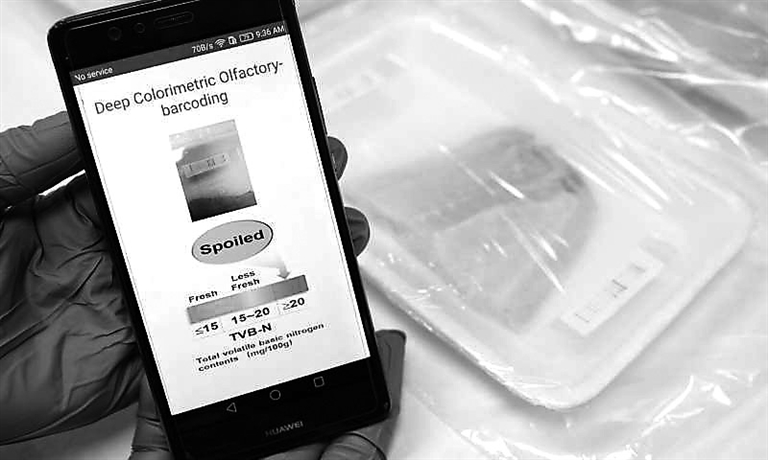
A TEAM of scientists led by Nanyang Technological University, Singapore (NTU) has invented an artificial olfactory system that mimics the mammalian nose to assess the freshness of meat accurately. The electronic nose comprises a barcode that changes color over time in reaction to the odor produced by meat as it decays, and a barcode reader in the form of a smartphone app powered by artificial intelligence. The e-nose has been trained to recognize and predict meat freshness from a large library of barcode colors. The e-nose can yield results in 30 seconds. The research team from NTU collaborated with scientists from Jiangnan University, China, and Monash University, Australia. They published a paper in the scientific journal Advanced Materials in October. Chen Xiaodong, the director of the Innovative Center for Flexible Devices at NTU, said: “Our proof-of-concept artificial olfactory system, which we tested in real-life scenarios, can be easily integrated into packaging materials and yields results in a short time without the bulky wiring used for electrical signal collection in some e-noses that were developed recently. These barcodes help consumers to save money by ensuring that they do not discard products that are still fit for consumption, which also helps the environment. The biodegradable and non-toxic nature of the barcodes also means they could be safely applied in all parts of the food supply chain to ensure food freshness.” The e-nose mimics how a mammalian nose works. When the odor produced by decaying meat binds to receptors in the mammalian nose, signals are generated and transmitted to the brain. The brain then collects these responses and organizes them into patterns, allowing the mammal to identify the odor as meat ages and rots. In the e-nose, the 20 bars in the barcode act as the receptors. Each bar is made of chitosan (a natural sugar) embedded on a cellulose derivative and loaded with a different type of dye. These dyes react with the odor emitted by decaying meat and change color in response to the different types and concentrations of odor, resulting in a unique combination of colors that serves as a scent fingerprint for the state of any meat. A type of AI algorithm known as deep convolutional neural networks was trained with images of different barcodes to identify patterns in the scent fingerprint that correspond to each category of freshness. To gage the prediction accuracy of their e-nose, the NTU scientists then monitored the freshness of commercially packed chicken, fish, and beef with barcodes glued on the packaging film, and stored at 25 degrees Celsius. Over 4,000 images of the barcodes from six meat packages were taken at different time intervals over 48 hours without opening the different meat packages. The team is now working with a Singapore agribusiness company to extend this concept to other types of perishables. (SD-Agencies) | 
